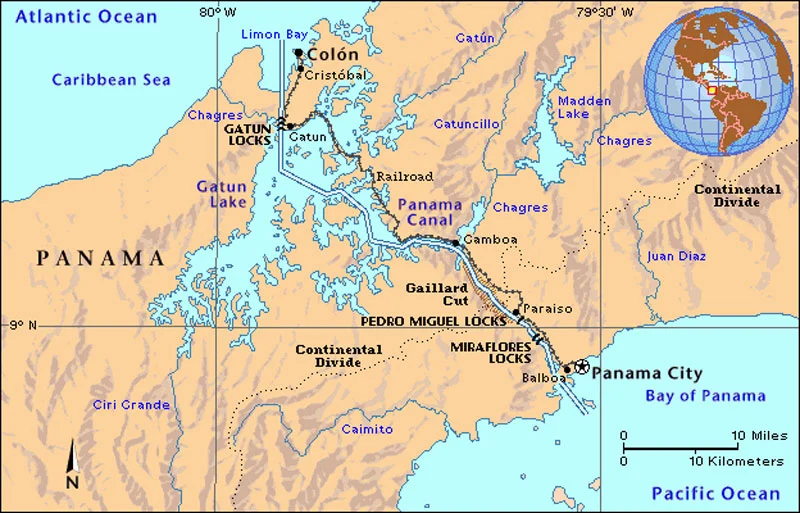In 2023, the Panama Canal faced its driest year, exposing stumps of a century-old flooded forest.
These remnants should be submerged despite the usual rainy season, signaling severe drought.
This condition has critically hampered a waterway crucial for $270 billion in global trade.
The Canal Authority contemplates long-term solutions like an artificial lake and cloud seeding. However, these proposals require years to implement.
Meanwhile, with water levels 1.8 meters below normal, ship traffic has significantly reduced, marking the tightest restrictions since 1989.
The canal’s traffic slightly improved after an unexpectedly rainy November, yet the bottleneck may worsen with the dry season’s onset.
The Authority’s water division manager, Erick Córdoba, emphasizes the urgent need for recalibration and action.

The canal’s struggles mirror how climate change disrupts global trade. Similar issues have arisen in the U.S. (Mississippi) and Europe (Rhein), emphasizing the global impact.
Panama, handling 3% of the world’s maritime trade, feels the acute need for sustainable solutions.
In the short term, the canal plans to release water from secondary reservoirs to maintain operations.
However, long-term strategies involve damming the Indio River, a project estimated to cost $2 billion and take six years.
Congressional approval
This plan aims to increase daily vessel traffic and provide fresh water to Panama City.
Yet, the proposal faces challenges, needing Congressional approval and facing opposition from farmers and ranchers whose lands would flood.
Previous protests against major infrastructure projects in Panama highlight the complexities of implementing such initiatives.
While officials seek lasting solutions, locals like Raquel Luna feel the immediate impact. Living on Lake Gatún’s shore, she now sees fewer visitors due to the receded waterline.
The canal’s situation underscores the need for comprehensive, sustainable infrastructure planning in the face of climate change.
As Panama and the world navigate these challenges, the need for innovative, cooperative, and sustainable solutions becomes increasingly clear.

